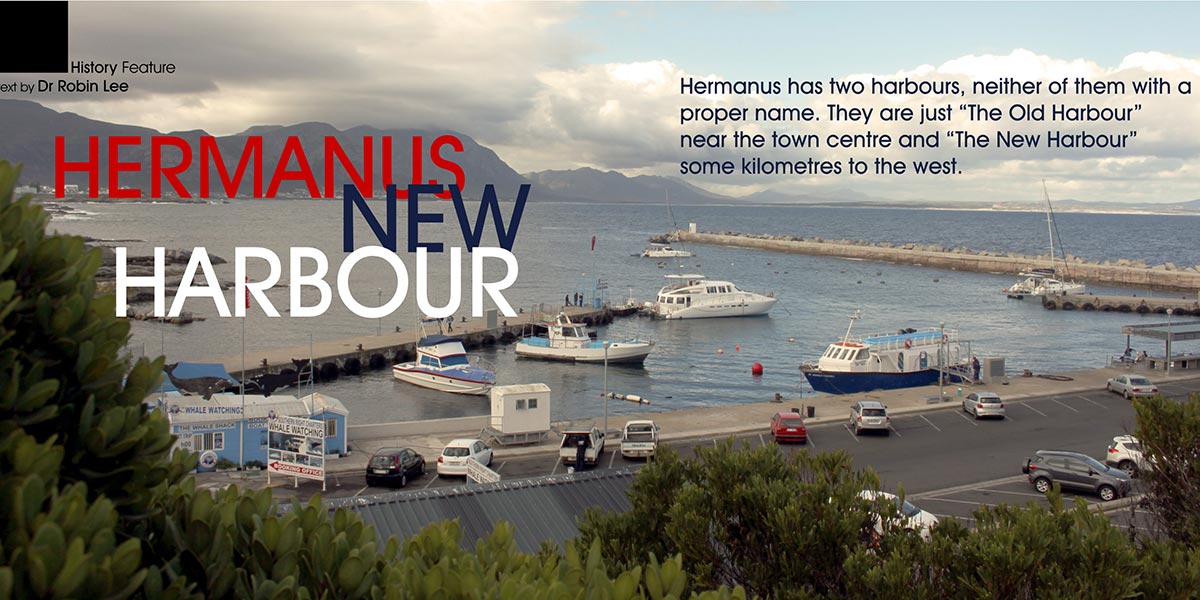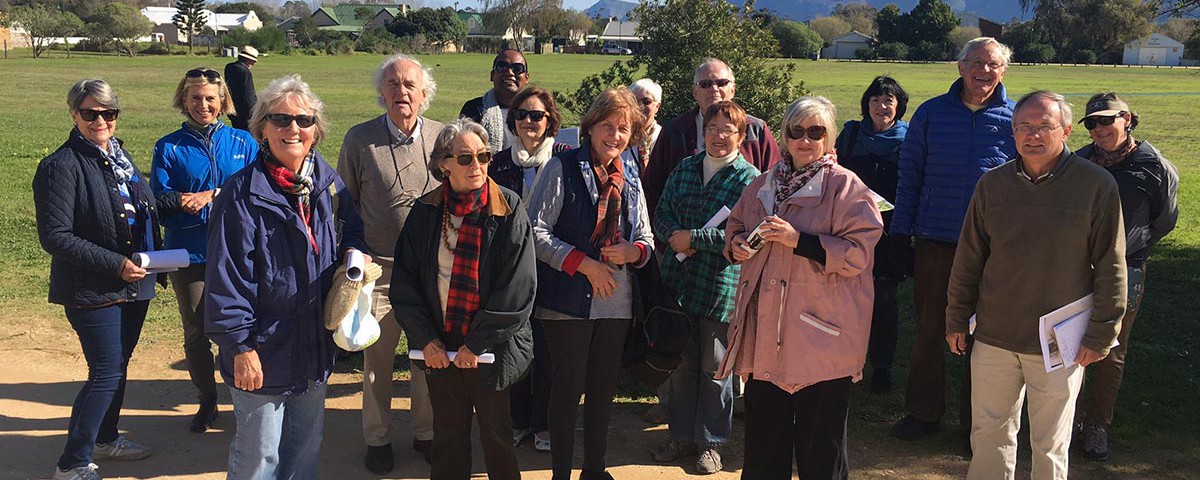
Hermanus New Harbour
June 8, 2016
The New Harbour in Hermanus: Part 2
July 14, 2016It was a sunny day when Bea Whittaker introduced 25 members of the Hermanus History Society to the village of Stanford named after Sir Robert Stanford. She gave us an illustrated talk before we were taken on foot to explore the village established on a portion of a farm in 1825. We paused at many and varied houses mainly dating from the 19th and early 20th centuries and laid out in a village grid system. The architectural features of each house were discussed, for example most of the old houses were ‘built virtually on the street’ to leave productive land behind the house.
Water was always significant and ‘leiwater’channels are in front of many houses. Barry Jones showed us how he has renovated part of his home in Caledon Street using traditional materials to show the past existence of the old mill, no longer in existence. This is set in a charming garden created by his wife Adrian. Artefacts of the time have been carefully incorporated to tell the story.
We learnt about the different characters that had shaped Stanford’s history and spent time in the oldest Anglican church, St Thomas built around 1880.
In 1992 the Stanford Conservation Trust was formed to protect the heritage of the village. In 1996, the whole town was declared a Conservation Area. It is the third largest urban conservation area in the country. This proved to be a very stimulating visit.
Angela Heslop
Reference: Historical Stanford on Foot – Published Stanford Heritage Committee 2011.
Photograph taken by Mick Fynn
Market Square/ Village Green

